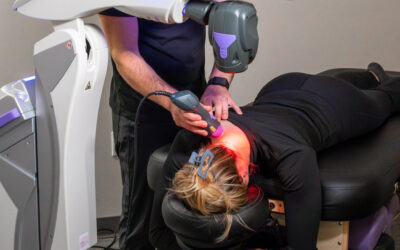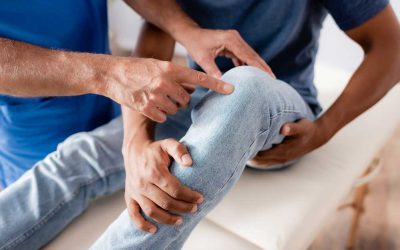EACH SPORT HAS ITS OWN ACHILLES HEEL
 Every sport lends itself to certain common conditions. Basketball players sprain their ankles. Baseball players hurt their elbows and hamstrings. Golfers experience back pain. Skiers tend to have achy knees. For distance runners, the ailment du jour is often found in the dreaded Iliotibial Band or ITB.
Every sport lends itself to certain common conditions. Basketball players sprain their ankles. Baseball players hurt their elbows and hamstrings. Golfers experience back pain. Skiers tend to have achy knees. For distance runners, the ailment du jour is often found in the dreaded Iliotibial Band or ITB.
ILIOTIBIAL BAND SYNDROME & SYMPTOMS
IT band syndrome is described is inflammation and irritation of the thick back of fascia that runs along the outer thigh, from the hip to the knee. Symptoms include a stinging sensation on the outside of the knee. Pain can become severe.
WHAT CAUSES IT BAND SYNDROME?
Pain and IT band-related conditions usually stem from two things: repetitive stress (overuse) and instability in the hips and…wait for it… feet.
Wait, what?!
The feet?
Yes, that’s right.
IT Band Syndrome can start in your feet.
In short, if your feet are not able to properly absorb the impact of the ground, it can cause problems in your ankles, knees, and even lower back over time. Don’t get me wrong, shoes, like proper gait patterns, are important. But runners all over the world are able to run insane distances relatively pain-free with nothing more than a thin piece of rubber between their feet and the earth. So what gives?
INJURY PREVENTION STARTS AND HOW CHIROPRACTIC CAN HELP
How do world-class runners avoid ITB Syndrome? Before they lace up their shoes, they lace up their body first (sort of speak). These athletes take time to train and acquaint themselves with the environment they live in. This doesn’t just benefit the foot, it supports everything up the chain.
Think about it this way: when you put on your running shoes, you take the time to lace up to the right fit and create a secure knot, correct? Well, consider these exercises as “lacing up” your body. Sounds silly? Yep. But stay with me here Training your feet and hips helps maintain good tissue balance between your quads and hamstrings and can reduce the amount of IT Band Syndrome has to absorb.
Did you know that the force on your body can be up to 8x body weight? If your body does not have the alignment to absorb the impact, your body will eventually fail you. This is why chiropractic shouldn’t not be a supplement to your training, but rather, a staple.
YOUR PRE-RUN WARMUP
Combined with chiropractic, helping to prevent Runner’s Knee can be as simple as incorporating a few movements into your pre-run warm-up.
- Activate the foot so it can properly absorb the impact of the ground and preserve good ankle and knee position.
- Activate the glutes so they can support the position of the femur and pelvis and keep the knee tracking over the foot, thus reducing possible stress on the ITB.
- Maintain quad flexibility so the knee doesn’t endure excessive tension and possible tracking issues due to tightness
- Maintain a good strength ratio between the quads and hamstrings. Muscle balance, baby!
MOVEMENTS TO HELP PREVENT ILIOTIBIAL BAND SYNDROME:
TFL Foam Rolling: 1-2 minutes each side
Quad Foam Rolling: 1-2 minutes each side
Toe Toga: 3 minutes
Shin Box Bridge: 2 x 10 (come down slow)
Single Leg Balance: 2 x 1 minutes (performing with toe spacers is ideal)
Get Treatment for ITBS
Thank you for taking the time to read this blog.
If you are currently experiencing ITBS, the best thing you can do is get it assessed and treated right away. The longer you wait, the longer it will take to recover and the more time and miles you would’ve lost.
We have 3 Seattle chiropractic locations and 1 Portland chiropractic location to serve you. Give us a call or submit and Make An Appointment today!


